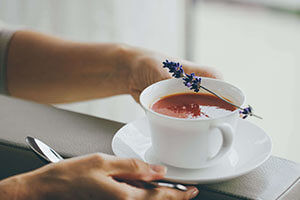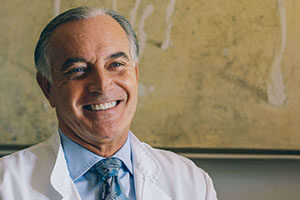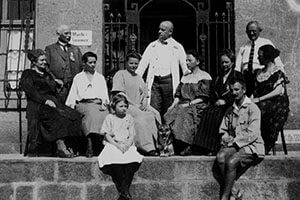Tips for a healthy and light food after fasting at Buchinger Wilhelmi
After completing a fast, your body needs to slowly adapt to eating solid food again. It is therefore essential that you eat the right foods. In order to continue enjoying the positive effects of fasting on your health after your stay in our clinic, it is important that you do not revert to former eating habits after completing the programme. Take your fasting experience as an opportunity to change the way you eat!
In the following, we have put together some information to help you gently reintroduce your body to nutrition after fasting. All therapeutic fasting programmes at our Buchinger Wilhelmi clinics in Marbella and on Lake Constance end with a supervised refeeding phase. During this time, you are given easily digestible meals made from high-quality ingredients. The Buchinger Wilhelmi fasting clinics use only 100 % certified organic food. In 2019 our clinic on Lake Constance was awarded Demeter certification for our cuisine.
What happens during the refeeding phase at Buchinger Wilhelmi?
Traditionally, patients break their fast with an apple for lunch. On the days following a fast, you build up your food intake slowly and enjoyably. How long this refeeding phase lasts depends on how long you fasted. For example, an eight-day fast should be followed by four refeeding days, during which you gradually increase your calorie intake from 800 to 1600 calories a day.
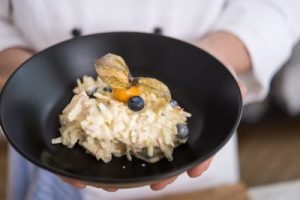
Why is the refeeding phase after therapeutic fasting so important?
The refeeding phase is extremely important for the long-term success of your fast. When you start eating again after a period of fasting, various regeneration processes are activated in the body. New mitochondria – the powerhouses of our cells – are formed in the neurons (nerve cells) and other cells. Experts call this process mitochondrial biogenesis.1
As the digestive system shuts down during fasting, it is important that your body is slowly and carefully reaccustomed to solids during the refeeding phase. If you skip this phase, it can result in nausea, vomiting or digestive problems. In other words, if you end your fast with a large portion of greasy chips, your body will be overwhelmed. It is better to use the end of your fast as an opportunity to eat more healthily in the long term.
During fasting, the composition of the intestinal flora also changes. The intestinal flora – also called the microbiome – plays a key role in the correct functioning of our immune system. Whereas certain intestinal bacteria decrease in number, others proliferate more quickly. During the refeeding phase, the immunomodulatory proteins in the blood increase, as we demonstrated in a study published in 2020. In other words, when you start eating food again, your immune system is activated and is soon back in full swing.
What diet is recommended after fasting?
To maintain the positive effects of therapeutic fasting after a stay in the clinic, a cautious approach to building up your food intake is recommended. Eat slowly and consciously, chew each bite thoroughly and pay attention to when you feel full. Your body has to accustom itself to wholefood nutrition after a period of fasting. A balanced, easy-to-digest ovo-lacto-vegetarian diet (plant-based diet including milk, dairy products and eggs) is ideal, but a vegan diet is also well tolerated.
Tip: You should always have these foods on hand.
The quality of the food you eat is extremely important, especially now.
You should choose high-quality produce that has been organically farmed, is unprocessed and if possible regional and seasonal.
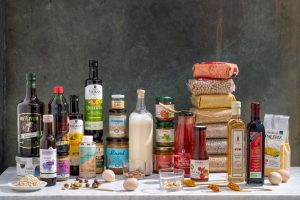
You should eat plenty of fruit and vegetables, supplemented with grains like buckwheat, polenta, quinoa, amaranth and rice. Sweet potatoes are also a healthy side dish. In the evenings, eat a light vegetable consommé with potatoes and cooked vegetables. Recommended oils include walnut, linseed, sunflower or olive oil. Nuts are also sources of good fats – but make sure you don’t eat too much of them!
Retune your sense of taste after breaking your fast!
Fasting is not only a good way to cleanse your body. It also “retunes” your sense of taste so that you are more sensitive to sweet and salty food. No apple ever tasted better than the one you celebrate breaking your fast with. If you start reducing your sugar intake at this point, you will probably not notice the difference. Natural sweetness comes from fruits (especially bananas and dry fruits), honey, maple syrup and raw cane sugar.
Make sure that you continue drinking sufficient amounts. It is better not to drink at meals (at the most a glass of lukewarm water or tea), but spread out throughout the day.
What shouldn’t you eat after fasting?
You should avoid high-fat, fried, hard-to-digest and highly processed foods in the first days and weeks after fasting, as well as fizzy drinks, alcohol, coffee and sweeteners. In addition, try not to eat too many different things at the same time. Two to three basic ingredients per meal are enough.
Not all vegetables are suitable in the first days after breaking your fast: Peppers, cabbage, onions and mushrooms put an unnecessary strain on your digestive tract. The same can apply to pulses. You should also avoid unripe fruit. Eating food that is too high in protein is not recommended, especially in the evenings. To satisfy your immediate hunger, you should start each meal with a salad. Try a tasty dressing made with a tablespoon of olive oil, high-quality vinegar and fresh herbs.
What should be on the menu after a fast?
Breakfast:
- Porridge with fruit (prunes) OR
- 1 natural yoghurt (150 g) + 1 tsp. linseed oil + 150 g fruit + 3 tbsp. wholemeal flakes OR
- 5-10 green olives (depending on their size) + 1 tomato + 1 slice of wholemeal bread or 150 g low-fat quark
Lunch:
- 1 small plate of antipasti (vegetarian) OR
- Brown rice with vegetables OR
- 2 potatoes with asparagus (with max. 1 tbsp. sauce, or better: cottage cheese)
Dinner:
- Vegetable consommé with potatoes and cooked vegetables OR
- Tofu with steamed vegetables OR
- Whole-grain pasta with tomato sauce + 1 tbsp. parmesan
Snacks:
- Organic natural yoghurt (1.5 % fat) OR
- Fresh fruit OR
- 1 handful of unsalted nuts
How can I maintain the positive effects of therapeutic fasting as long as possible?
You should continue to consciously enjoy each meal. That means taking time, chewing each bite thoroughly and avoiding distractions – not only social media and television, but also stimulating conversation. You will have plenty of time for that after your meal!
Drink at least two litres of water each day; not soft drinks, but still water, unsweetened tea and diluted fruit and vegetable juice.
To guarantee the long-term success of your fast, you should also exercise regularly. You can make exercise part of your daily routine, for example by taking the stairs instead of the elevator, cycling to work or getting off the bus early and walking the last stretch. Why not enjoy a stroll in the park or woods or join a yoga class instead of meeting for coffee and cakes?

Continue to use regional, natural ingredients as the main constituents of your diet. The less processed they are, the better! Regular cleansing days when you eat less than normal, will treat your body to a break. An alternative that is easily integrated into many people’s daily routine is dinner cancelling once a week, for example.
We hope that these tips help you make the transition from fasting back to your everyday routine, and that you benefit from the success of your fast in the long run.




